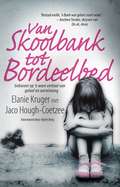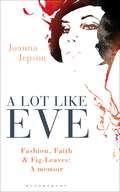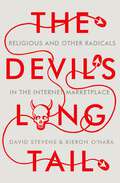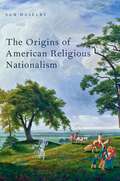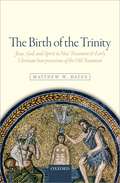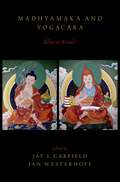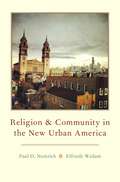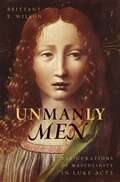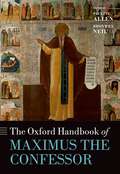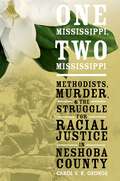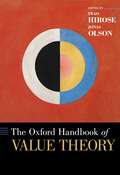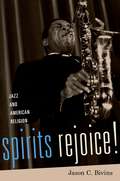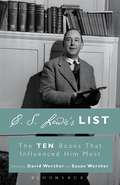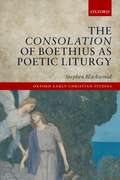- Table View
- List View
Van Skoolbank tot bordeelbed: Gebasseer op 'n ware verhaal van geloof en oorwinning
by Jaco Hough-CoetzeeAs 16-jarigevlug Engela na Bloemfontein, want die leier van die Sataniese Groep 13 wil haar doodmaak. Haar paaie kruis met dié van Pieter, vriend van haar broer, wat haar aan bordeel-eienaar uitlewer as betaling vir die geld wat hy hom skuld. Na haglike en armoedige kinderlewe raak Engela as rebelse tiener deurmekaar met Satanisme, drank en dwelms en word uiteindelik as seksslaaf aangehou. Haar enigste begeerte is om te ontsnap, maar hoe? Elke aand word die klub se deure dig gesluit. Haar laaste kans op vryheid is die jong student, Jacques, wat in die ontvangslokaal van die klub werk. Maar dan verdwyn hy ook uit die prentjie na raaiselagtige ongeluk in die Drakensberge. Van Skoolbank tot Bordeelbed is spanningsroman deur Jaco Hough-Coetzee, gebaseer op die aangrypende lewensverhaal van Elanie Kruger. In die tweede gedeelte van die boek gesels Elanie self met die leser oor haar bittere ervarings. Sy vertel hoe sy haar gevoelens van verlorendheid, alleenheid, pyn en vernedering vanuit Christelike perspektief leer hanteer het. Sy reik uit na ander gewese seksslagoffers en moedig hulle aan om hul harte uit te stort om emosionele genesing mee te bring. Sy praat oor die krag van vergifnis en aanvaarding, en gee ook lewensbelangrike praktiese wenke aan ouers en kinders.
An Introduction to the Study of Paul (T&T Clark Approaches to Biblical Studies)
by David G. HorrellThis tried and tested introduction to Paul needs little introduction of its own. After considering Paul's importance and influence, and the important sources for the study of Paul, the volume covers the following key topics: the earliest period of Christianity - from Jesus to Paul; Paul's life before and after his 'conversion'; his individual letters; the major elements of his theology; his attitude to Israel and the Jewish law; perspectives on the Pauline assemblies, including their socio-economic location, meeting places, and attitudes towards women; and Paul's legacy in the New Testament and beyond. The volume has been revised throughout and fully updated with respect to bibliography, and to presenting the latest debates surrounding Paul's thought in a manageable format - including those around 'old' and 'new' perspectives, with a new section on the 'radical' new Jewish perspective, and those related to the socio-economic status and character of the Pauline assemblies. The helpful study questions and reading lists have also been revised.
A Lot Like Eve: Fashion, Faith and Fig-Leaves: A Memoir
by Joanna JepsonJoanna Jepson was born with a facial deformity that led to her being mercilessly bullied through childhood and adolescence whilst a strict evangelical upbringing imposed further challenges. Reconstructive facial surgery and a religious meltdown left her unrecognizable and disorientated, and triggered a search for identity and belonging. After ordination, a spell in the cloisters of a Welsh convent and a burst of headline-hitting fame in relation to the cleft palate abortions in the news a few years ago, Joanna became the first Chaplain to the London College of Fashion, with unique opportunities to explore the world of self-image. Not just an autobiography, A Lot Like Eve exposes the cultural idols and preoccupations that hook so many women into trying to prove that they are worthwhile in the way that the world expects. Like the first (metaphorical) woman, Eve, we too are still trying to pretend that we are wonderfully adorned by our own kind of fig-leaves.
The Shape of the Liturgy, New Edition
by Dom Gregory DixA new edition of Gregory Dix's masterpiece, still essential reading for students and scholars and in print constantly for fifty years.Dom Gregory Dix's classic account of the development of the Eucharist rite continues to be the definitive and authoritative work on the subject. He presents his massive scholarship in lively and non technical language for all who wish to understand their worship in terms of the framework from which it has evolved. He demonstrates the creative force of Christianity over the centuries through liturgy and the societies it has moulded. His great work has for nearly fifty years regularly been quoted for its devotional as well as its historical value, and has regularly attracted new readers.In this book for the first time, critical studies in the learned periodicals of many countries have been carefully sifted and the results arranged to give a clear picture of the development of the Eucharistic rite.
Religion in the Oval Office: The Religious Lives of American Presidents
by Gary Scott SmithIn his highly praised book Faith and the Presidency, Gary Scott Smith cast a revealing light on the role religion has played in presidential politics throughout our nation's history, offering comprehensive, even-handed examinations of the role of religion in the lives, politics, and policies of eleven presidents. Now, in Religion in the Oval Office, Smith takes on eleven more of our nation's most interesting and influential chief executives: John Adams, James Madison, John Quincy Adams, Andrew Jackson, William McKinley, Herbert Hoover, Harry Truman, Richard Nixon, George H. W. Bush, Bill Clinton, and Barack Obama. Drawing on a wide range of sources and paying close attention to historical context and America's shifting social and moral values, he examines their religious beliefs, commitments, affiliations, and practices and scrutinizes their relationships with religious leaders and communities. The result is a fascinating account of the ways in which religion has helped shape the course of our history. From John Quincy Adams' treatment of Native Americans, to Harry Truman's decision to recognize Israel, to Bill Clinton's promotion of religious liberty and welfare reform, to Barack Obama's policies on poverty and gay rights, Smith shows how strongly our presidents' religious commitments have affected policy from the earliest days of our nation to the present. Together with Faith and the Presidency, Religion in the Oval Office provides the most comprehensive examination of the inseparable and intriguing relationship between faith and the American presidency. This book will be invaluable to anyone interested in the presidency and the role of religion in politics.
Sex and the Soul, Updated Edition: Juggling Sexuality, Spirituality, Romance, and Religion on America's College Campuses
by Donna FreitasFirst published in 2008, Donna Freitas's Sex and the Soul revealed what college students -- at institutions large and small, public and private, secular, Catholic, and evangelical -- really think about sex, dating, religion, and spirituality. Based on face-to-face interviews with students across the country, Sex and the Soul achieved national acclaim, illuminating the as-yet-unexplored struggles of college students navigating the lines of faith and sexuality. Now, in this updated edition, Freitas reflects on the hundreds of conversations she has had with students since the book was first published in an all-new afterword, and offers practical advice for young people struggling with issues of sex and spirituality and for the adults giving them guidance.
The Devil's Long Tail: Religious and Other Radicals in the Internet Marketplace
by David Stevens Kieron O'HaraThe internet may be a utopia for free expression, but it also harbours nihilistic groups and individuals spreading bizarre creeds, unhindered by the risk-averse gatekeepers of the mass media -- and not all are as harmless as the Virtual Church of the Blind Chihuahua or Sexastrianism. With few entry barriers, ready anonymity and no centralised control, the internet offers wired extremists unprecedented access to a potential global audience of billions. Technology allows us to select the information we wish to receive -- so those of a fanatical bent can filter out moderating voices and ignore countervailing arguments, retreating into a virtual world of their own design that reaffirms their views. In The Devil's Long Tail, Stevens and O'Hara argue that we misunderstand online extremism if we think intervention is the best way to counter it. Policies designed to disrupt radical networks fail because they ignore the factors that push people to the margins. Extremists are driven less by ideas than by the benefits of participating in a tightly-knit, self-defined, group. Rather, extreme ideas should be left to sink or swim in the internet's marketplace of ideas. The internet and the web are valuable creations of a free society. Censoring them impoverishes us all while leaving the radical impulse intact.
An Archaeological History of Indian Buddhism
by Lars FogelinAn Archaeological History of Indian Buddhism is a comprehensive survey of Indian Buddhism from its origins in the 6th century BCE, through its ascendance in the 1st millennium CE, and its eventual decline in mainland South Asia by the mid-2nd millennium CE. Weaving together studies of archaeological remains, architecture, iconography, inscriptions, and Buddhist historical sources, this book uncovers the quotidian concerns and practices of Buddhist monks and nuns (the sangha), and their lay adherents--concerns and practices often obscured in studies of Buddhism premised largely, if not exclusively, on Buddhist texts. At the heart of Indian Buddhism lies a persistent social contradiction between the desire for individual asceticism versus the need to maintain a coherent community of Buddhists. Before the early 1st millennium CE, the sangha relied heavily on the patronage of kings, guilds, and ordinary Buddhists to support themselves. During this period, the sangha emphasized the communal elements of Buddhism as they sought to establish themselves as the leaders of a coherent religious order. By the mid-1st millennium CE, Buddhist monasteries had become powerful political and economic institutions with extensive landholdings and wealth. This new economic self-sufficiency allowed the sangha to limit their day-to-day interaction with the laity and begin to more fully satisfy their ascetic desires for the first time. This withdrawal from regular interaction with the laity led to the collapse of Buddhism in India in the early-to-mid 2nd millennium CE. In contrast to the ever-changing religious practices of the Buddhist sangha, the Buddhist laity were more conservative--maintaining their religious practices for almost two millennia, even as they nominally shifted their allegiances to rival religious orders. This book also serves as an exemplar for the archaeological study of long-term religious change through the perspectives of practice theory, materiality, and semiotics.
Methodism in the American Forest
by Russell E. RicheyWinner of the 2015 Saddleback Selection Award from the Historical Society of The United Methodist Church During the nineteenth century, camp meetings became a signature program of American Methodists and an extraordinary engine for their remarkable evangelistic outreach. Methodism in the American Forest explores the ways in which Methodist preachers interacted with and utilized the American woodland, and the role camp meetings played in the denomination's spread across the country. Half a century before they made themselves such a home in the woods, the people and preachers learned the hard way that only a fool would adhere to John Wesley's mandate for preaching in fields of the New World. Under the blazing American sun, Methodist preachers sought and found a better outdoor sanctuary for large gatherings: under the shade of great oaks, a natural cathedral where they held forth with fervid sermons. The American forests, argues Russell E. Richey, served the preachers in several important ways. Like a kind of Gethesemane, the remote, garden-like solitude provided them with a place to seek counsel from the Holy Spirit. They also saw the forest as a desolate wilderness, and a means for them to connect with Israel's years after the Exodus and Jesus's forty days in the desert after his baptism by John. The dauntless preachers slashed their way through, following America's expanding settlement, and gradually sacralizing American woodlands as cathedral, confessional, and spiritual challenge-as shady grove, as garden, and as wilderness. The threefold forest experience became a Methodist standard. The meeting of Methodism's basic governing body, the quarterly conference, brought together leadership of all levels. The event stretched to two days in length and soon great crowds were drawn by the preaching and eventually the sacraments that were on offer. Camp meetings, if not a Methodist invention, became the movement's signature, a development that Richey tracks throughout the years that Methodism matured, to become a central denomination in America's religious landscape.
The Prophet of Cuernavaca: Ivan Illich and the Crisis of the West
by Todd HartchCatholic priest and radical social critic Ivan Illich is best known for books like Deschooling Society and Medical Nemesis that skewered the dominant institutions of the West in the 1970s. Although commissioned in 1961 by American bishops to run a missionary training center in Cuernavaca, Mexico, Illich emerged as one of the major critics of the missionary movement. As he became a more controversial figure, his center evolved into CIDOC (Centro Intercultural de Documentación), an informal university that attracted a diverse group of intellectuals and seekers from around the world. They came to Illich's center to learn Spanish, to attend seminars, and to sit at the feet of Illich, whose relentless criticism of the Catholic Church and modern Western culture resonated with the revolutionary spirit of the times. His 1967 article, "The Seamy Side of Charity," a harsh attack on the American missionary effort in Latin America, and other criticisms of the Church led to a trial at the Vatican in 1968, after which he left the priesthood. Illich's writings struck at the foundations of western society, and envisioned utopian transformations in the realms of education, transportation, medicine, and economics. He was an inspiration to a generation of liberation theologians and other left-wing intellectuals. In The Prophet of Cuernavaca Todd Hartch traces the development of Illich's ideas from his work as a priest through his later secular period, offering one of the first book-length historical treatments of his thought in English.
Vedic Voices: Intimate Narratives of a Living Andhra Tradition
by David M. KnipeFor countless generations families have lived in isolated communities in the Godavari Delta of coastal Andhra Pradesh, learning and reciting their legacy of Vedas, performing daily offerings and occasional sacrifices. They are the virtually unrecognized survivors of a 3,700-year-old heritage, the last in India who perform the ancient animal and soma sacrifices according to Vedic tradition. In Vedic Voices, David M. Knipe offers for the first time, an opportunity for them to speak about their lives, ancestral lineages, personal choices as pandits, wives, children, and ways of coping with an avalanche of changes in modern India. He presents a study of four generations of ten families, from those born at the outset of the twentieth century down to their great-grandsons who are just beginning, at the age of seven, the task of memorizing their Veda, the Taittiriya Samhita, a feat that will require eight to twelve years of daily recitations. After successful examinations these young men will reside with the Veda family girls they married as children years before, take their places in the oral transmission of a three-thousand-year Vedic heritage, teach the Taittiriya collection of texts to their own sons, and undertake with their wives the major and minor sacrifices performed by their ancestors for some three millennia. Coastal Andhra, famed for bountiful rice and coconut plantations, has received scant attention from historians of religion and anthropologists despite a wealth of cultural traditions. Vedic Voices describes in captivating prose the geography, cultural history, pilgrimage traditions, and celebrated persons of the region. Here unfolds a remarkable story of Vedic pandits and their wives, one scarcely known in India and not at all to the outside world.
The Origins of American Religious Nationalism (Religion in America)
by Sam HaselbySam Haselby offers a new and persuasive account of the role of religion in the formation of American nationality, showing how a contest within Protestantism reshaped American political culture and led to the creation of an enduring religious nationalism. Following U.S. independence, the new republic faced vital challenges, including a vast and unique continental colonization project undertaken without, in the centuries-old European senses of the terms, either "a church" or "a state." Amid this crisis, two distinct Protestant movements arose: a popular and rambunctious frontier revivalism; and a nationalist, corporate missionary movement dominated by Northeastern elites. The former heralded the birth of popular American Protestantism, while the latter marked the advent of systematic Protestant missionary activity in the West. The explosive economic and territorial growth in the early American republic, and the complexity of its political life, gave both movements opportunities for innovation and influence. This book explores the competition between them in relation to major contemporary developments-political democratization, large-scale immigration and unruly migration, fears of political disintegration, the rise of American capitalism and American slavery, and the need to nationalize the frontier. Haselby traces these developments from before the American Revolution to the rise of Andrew Jackson. His approach illuminates important changes in American history, including the decline of religious distinctions and the rise of racial ones, how and why "Indian removal" happened when it did, and with Andrew Jackson, the appearance of the first full-blown expression of American religious nationalism.
The Shakers: History, Culture and Craft (Shire Library USA #813)
by Lesley HerzbergShaker handicrafts' dignified simplicity is perhaps our greatest example of form following function. An off-shoot of Quakerism, the Shakers sought to create a heaven on earth through both worship and diligent work. Practical yet attractive, the furniture, textiles, tools and machinery of the Shakers are utterly distinctive and became famous the world over during the twentieth century, with certain Modernist architects and designers finding unexpected common ground with this decidedly non-modern sect. 'Shaker Handicraft' – the first Shaker exhibition at the Whitney Museum of American Art in 1935 – was only the first of many exhibits, and today the spirit of the Shakers – and the clean lines, solid construction and honest functionality of their crafts – make it one of the most popular and timeless design categories in the US and beyond.
The Birth of the Trinity: Jesus, God, and Spirit in New Testament and Early Christian Interpretations of the Old Testament
by Matthew W. BatesHow and when did Jesus and the Spirit come to be regarded as fully God? The Birth of the Trinity offers a new historical approach by exploring the way in which first- and second-century Christians read the Old Testament in order to differentiate the one God as multiple persons. The earliest Christians felt they could metaphorically overhear divine conversations between the Father, Son, and Spirit when reading the Old Testament. When these snatches of dialogue are connected and joined, they form a narrative about the unfolding interior divine life as understood by the nascent church. What emerges is not a static portrait of the triune God, but a developing story of divine persons enacting mutual esteem, voiced praise, collaborative strategy, and self-sacrificial love. The presence of divine dialogue in the New Testament and early Christian literature shows that, contrary to the claims of James Dunn and Bart Ehrman (among others), the earliest Christology was the highest Christology, as Jesus was identified as a divine person through Old Testament interpretation. The result is a Trinitarian biblical and early Christian theology.
Madhyamaka and Yogacara: Allies or Rivals?
Madhyamaka and Yogacara are the two principal schools of Mahayana Buddhist philosophy. While Madhyamaka asserts the ultimate emptiness and conventional reality of all phenomena, Yogacara is usually considered to be idealistic. This collection of essays addresses the degree to which these philosophical approaches are consistent or complementary. Indian and Tibetan doxographies often take these two schools to be philosophical rivals. They are grounded in distinct bodies of sutra literature and adopt what appear to be very different positions regarding the analysis of emptiness and the status of mind. Madhyamaka-Yogacara polemics abound in Indian Buddhist literature, and Tibetan doxographies regard them as distinct systems. Nonetheless, scholars have tried to synthesize the two positions for centuries. This volume offers new essays by prominent experts on both these traditions, who address the question of the degree to which these philosophical approaches should be seen as rivals or as allies. In answering the question of whether Madhyamaka and Yogacara can be considered compatible, contributors engage with a broad range of canonical literature, and relate the texts to contemporary philosophical problems.
Religion and Community in the New Urban America
by Paul D. Numrich Elfriede WedamReligion and Community in the New Urban America examines the interrelated transformations of cities and urban congregations. The authors ask how the new metropolis affects local religious communities and what role those communities play in creating the new metropolis. Through an in-depth study of fifteen Chicago congregations-Catholic parishes, Protestant churches, Jewish synagogues, Muslim mosques, and a Hindu temple, both city and suburban-this book describes congregational life and measures congregational influences on urban environments. Paul D. Numrich and Elfriede Wedam challenge the view held by many urban studies scholars that religion plays a small role-if any-in shaping postindustrial cities and that religious communities merely adapt to urban structures in a passive fashion. Taking into account the spatial distribution of constituents, internal traits, and external actions, each congregation's urban impact is plotted on a continuum of weak, to moderate, to strong, thus providing a nuanced understanding of the significance of religion in the contemporary urban context. Presenting a thoughtful analysis that includes maps of each congregation in its social-geographic setting, the authors offer an insightful look into urban community life today, from congregations to the places in which they are embedded.
Religion Without Redemption: Social Contradictions and Awakened Dreams in Latin America (Decolonial Studies, Postcolonial Horizons)
by Luis Martínez AndradeLatin America has been a place of radical political inspiration providing an alternative to the neoliberal model. Religion without Redemption looks at the sociology of religion, political philosophy and the history of ideas of the continent, in an attempt to show how Western understanding fails to come close to a correct analysis of how and why political and economic characteristics work as they do.*BR**BR*It focuses on how the centrality of religion for the people of Latin America has influenced how they interact with the changes in the modern economic system. Capitalism has taken on religious characteristics: it has sacred places of worship, such as the shopping mall, as well as its own prophets. This book explains how this form of ‘cultural religion’ accompanies many aspects of life in a contradictory manner: not only does it fulfil the role of legitimating oppression, it also can be a powerful source of rebellion, unveiling thus a subversive side to the status quo.*BR**BR*Religion Without Redemption advances the ideas of liberation theory into the 21st century, and challenges the provincialism to which many Latin American thinkers are usually consigned.
Unmanly Men: Refigurations of Masculinity in Luke-Acts
by Brittany E. WilsonNew Testament scholars typically assume that the men who pervade the pages of Luke's two volumes are models of an implied "manliness." Scholars rarely question how Lukan men measure up to ancient masculine mores, even though masculinity is increasingly becoming a topic of inquiry in the field of New Testament and its related disciplines. Drawing especially from gender-critical work in classics, Brittany Wilson addresses this lacuna by examining key male characters in Luke-Acts in relation to constructions of masculinity in the Greco-Roman world. Of all Luke's male characters, Wilson maintains that four in particular problematize elite masculine norms: namely, Zechariah (the father of John the Baptist), the Ethiopian eunuch, Paul, and, above all, Jesus. She further explains that these men do not protect their bodily boundaries nor do they embody corporeal control, two interrelated male gender norms. Indeed, Zechariah loses his ability to speak, the Ethiopian eunuch is castrated, Paul loses his ability to see, and Jesus is put to death on the cross. With these bodily "violations," Wilson argues, Luke points to the all-powerful nature of God and in the process reconfigures--or refigures--men's own claims to power. Luke, however, not only refigures the so-called prerogative of male power, but he refigures the parameters of power itself. According to Luke, God provides an alternative construal of power in the figure of Jesus and thus redefines what it means to be masculine. Thus, for Luke, "real" men look manifestly unmanly. Wilson's findings in Unmanly Men will shatter long-held assumptions in scholarly circles and beyond about gendered interpretations of the New Testament, and how they can be used to understand the roles of the Bible's key characters.
The Oxford Handbook of Maximus the Confessor (Oxford Handbooks)
Maximus the Confessor (c.580-662) has become one of the most discussed figures in contemporary patristic studies. This is partly due to the relatively recent discovery and critical edition of his works in various genres, including On the Ascetic Life, Four Centuries on Charity, Two Centuries on Theology and the Incarnation, On the 'Our Father', two separate Books of Difficulties, addressed to John and to Thomas, Questions and Doubts, Questions to Thalassius, Mystagogy and the Short Theological and Polemical Works. The impact of these works reached far beyond the Greek East, with his involvement in the western resistance to imperial heresy, notably at the Lateran Synod in 649. Together with Pope Martin I (649-53 CE), Maximus the Confessor and his circle were the most vocal opponents of Constantinople's introduction of the doctrine of monothelitism. This dispute over the number of wills in Christ became a contest between the imperial government and church of Constantinople on the one hand, and the bishop of Rome in concert with eastern monks such as Maximus, John Moschus, and Sophronius, on the other, over the right to define orthodoxy. An understanding of the difficult relations between church and state in this troubled period at the close of Late Antiquity is necessary for a full appreciation of Maximus' contribution to this controversy. The editors of this volume aim to provide the political and historical background to Maximus' activities, as well as a summary of his achievements in the spheres of theology and philosophy, especially neo-Platonism and Aristotelianism.
A New Gospel for Women: Katharine Bushnell and the Challenge of Christian Feminism
by Kristin Kobes Du MezA New Gospel for Women tells the story of Katharine Bushnell (1855-1946), author of God's Word to Women, one of the most innovative and comprehensive feminist theologies ever written. An internationally-known social reformer and women's rights activist, Bushnell rose to prominence through her highly publicized campaigns against prostitution and the trafficking of women in America, in colonial India, and throughout East Asia. In each of these cases, the intrepid reformer struggled to come to terms with the fact that it was Christian men who were guilty of committing acts of appalling cruelty against women. Ultimately, Bushnell concluded that Christianity itself - or rather, the patriarchal distortion of true Christianity - must be to blame. A work of history, biography, and historical theology, Kristin Kobes DuMez's book provides a vivid account of Bushnell's life. It maps a concise introduction to her fascinating theology, revealing, for example, Bushnell's belief that gender bias tainted both the King James and the Revised Versions of the English Bible. As Du Mez demonstrates, Bushnell insisted that God created women to be strong and independent, that Adam, not Eve, bore responsibility for the Fall, and that it was through Christ, "the great emancipator of women," that women would achieve spiritual and social redemption. A New Gospel for Women restores Bushnell to her rightful place in history. It illuminates the dynamic and often thorny relationship between faith and feminism in modern America by mapping Bushnell's story and her subsequent disappearance from the historical record. Most pointedly, the book reveals the challenges confronting Christian feminists today who wish to construct a sexual ethic that is both Christian and feminist, one rooted not in the Victorian era, but rather one suited to the modern world.
One Mississippi, Two Mississippi: Methodists, Murder, and the Struggle for Racial Justice in Neshoba County
by Carol V. GeorgeDuring Freedom Summer 1964, three young civil rights workers who were tasked with registering voters at Mt. Zion Methodist Church in Neshoba County, Mississippi were murdered there by law enforcement and Ku Klux Klansmen. The murders were hardly noticed in the area, so familiar had such violence become in the Magnolia State. For forty-one days the bodies of the three men lay undetected in a nearby dam, and for years afterward efforts to bring those responsible to justice were met only with silence. In One Mississippi, Two Mississippi, Carol V.R. George links the history of the Methodist Church (now the United Methodist Church), with newly-researched local history to show the role of this large denomination, important to both blacks and whites, in Mississippi's stumble toward racial justice. From 1930-1968, white Methodists throughout the church segregated their black co-religionists, silencing black ministers and many white ministers as well, locking their doors to all but their own members. Finally, the combination of civil rights activism and embarrassed Methodist morality persuaded the United Methodists to restore black people to full membership. As the county and church integrated, volunteers from all races began to agitate for a new trial for the chief conspirator of the murders. In 2005, forty-one years after the killings, the accused was found guilty, his fate determined by local jurors who deliberated in a city ringed with casinos, unrecognizable to the old Neshoba. In one sense a spiritual history, the book is a microhistory of Mt. Zion Methodist Church and its struggles with white Neshoba, as a community learned that reconciliation requires a willingness to confront the past fully and truthfully. George draws on interviews with county residents, black and white Methodist leaders, civil rights veterans, and those in civic groups, academia, and state government who are trying to carry the flag for reconciliation. George's sources--printed, oral, and material--offer a compelling account of the way in which residents of a place long reviled as "dark Neshoba" have taken up the task of truth-telling in a world uncomfortable with historical truth.
The Oxford Handbook of Value Theory (Oxford Handbooks)
by Iwao Hirose Jonas OlsonValue theory, or axiology, looks at what things are good or bad, how good or bad they are, and, most fundamentally, what it is for a thing to be good or bad. Questions about value and about what is valuable are important to moral philosophers, since most moral theories hold that we ought to promote the good (even if this is not the only thing we ought to do). This Handbook focuses on value theory as it pertains to ethics, broadly construed, and provides a comprehensive overview of contemporary debates pertaining not only to philosophy but also to other disciplines-most notably, political theory and economics. The Handbook's twenty-two newly commissioned chapters are divided into three parts. Part I: Foundations concerns fundamental and interrelated issues about the nature of value and distinctions between kinds of value. Part II: Structure concerns formal properties of value that bear on the possibilities of measuring and comparing value. Part III: Extensions, finally, considers specific topics, ranging from health to freedom, where questions of value figure prominently.
Spirits Rejoice!: Jazz and American Religion
by Jason C. BivinsIn Spirits Rejoice! Jason Bivins explores the relationship between American religion and American music, and the places where religion and jazz have overlapped. Much writing about jazz tends toward glorified discographies or impressionistic descriptions of the actual sounds. Rather than providing a history, or series of biographical entries, Spirits Rejoice! takes to heart a central characteristic of jazz itself and improvises, generating a collection of themes, pursuits, reoccurring foci, and interpretations. Bivins riffs on interviews, liner notes, journals, audience reception, and critical commentary, producing a work that argues for the centrality of religious experiences to any legitimate understanding of jazz, while also suggesting that jazz opens up new interpretations of American religious history. Bivins examines themes such as musical creativity as related to specific religious traditions, jazz as a form of ritual and healing, and jazz cosmologies and metaphysics. Spirits Rejoice! connects Religious Studies to Jazz Studies through thematic portraits, and a vast number of interviews to propose a new, improvisationally fluid archive for thinking about religion, race, and sound in the United States. Bivins's conclusions explore how the sound of spirits rejoicing challenges not only prevailing understandings of race and music, but also the way we think about religion. Spirits Rejoice! is an essential volume for any student of jazz, American religion, or American culture.
C. S. Lewis's List: The Ten Books That Influenced Him Most
by David Werther Susan WertherIn 1962, The Christian Century published C. S. Lewis's answer to the question, "What books did most to shape your vocational attitude and your philosophy of life?†? Lewis responded with ten titles, ranging from Virgil's Aeneid to James Boswell's The Life of Samuel Johnson and from George Herbert's The Temple to Boethius's The Consolation of Philosophy. C. S. Lewis's List brings together experts on each of the ten books to discuss their significance for Lewis's life and work, illuminating his own writing through those he most admired.
The Consolation of Boethius as Poetic Liturgy (Oxford Early Christian Studies)
by Stephen BlackwoodThroughout Antiquity and the Middle Ages, literature was read with the ear as much as with the eye: silent reading was the exception; audible reading, the norm. This highly original book shows that Boethius's Consolation of Philosophy - one of the most widely-read texts in Western history-aims to affect the listener through the designs of its rhythmic sound. Stephen Blackwood argues that the Consolation's metres are arranged in patterns that have a therapeutic and liturgical purpose: as a bodily mediation of the text's consolation, these rhythmic patterns enable the listener to discern the eternal in the motion of time. The Consolation of Boethius as Poetic Liturgy vividly explores how in this acoustic encounter with the text philosophy becomes a lived reality, and reading a kind of prayer.
